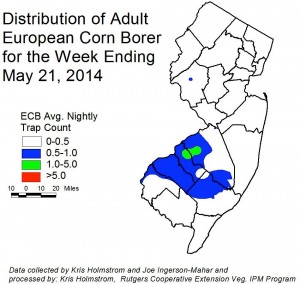I have observed a lot of emerged Palmer amaranth seedlings.
Early planted corn should be scouted at 4 weeks after planting to determine if a POST herbicide application is needed. A lot of no-till soybean fields need a burndown herbicide, and if Palmer amaranth is present in those fields, it makes things challenging. If the field was burned down earlier, and weeds have emerged since application, consider using Gramoxone (paraquat) to control emerged Palmer amaranth plants. Residual herbicides containing metribuzin or chlorimuron (unless the field has had history of poor control with ALS herbicides [Group 2]) will provide the greatest amount of help for burndown control of emerged Palmer amaranth in no-till soybean fields.

